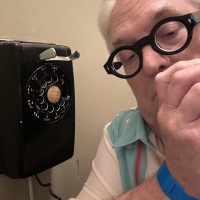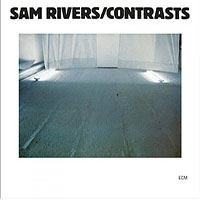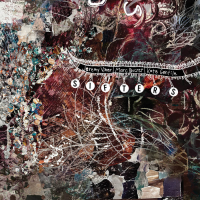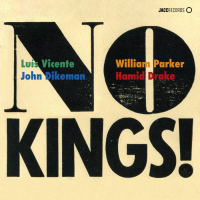Home » Jazz Articles » Extended Analysis » Uri Caine: Wagner e Venezia
Uri Caine: Wagner e Venezia
Caine's survey of the classical realm was further buffeted with his critically-acclaimed take of Bach's Goldberg Variations (W&W, 2000), Love Fugue: Robert Schumann (W&W, 2000), Diabelli Variations (After Ludwig Van Beethoven (W & W, 2003), Uri Caine Plays Mozart (W&W, 2007), the Verdi-centered Othello Syndrome (W&W, 2007) and multi-composer The Classical Variations (W&W, 2008). These highly personal conceptions stand as Caine's bona fides at the crossroads where classical music and jazz intersect.
What Caine establishes with Wagner e Venezia ("Wagner in Venice") is his multidirectional modus operandi where he, at once, reorchestrates the familiar in imaginative ways, defines W&W's "Audiofilm" ideal (though, oddly, Wagner e Venezia is not classified as such in their catalog) and adds some well-deserved humor using just a smidgin of irreverence, whimzy and electric intellect. Regarding his orchestration, Caine scores well-known selections from Wagner's book for an acoustic band consisting of two violins, cello, bass, piano and the real Caine kicker, accordion. This pared-down orchestra is given the personality of a parlor or bistro band. The accordion lends a certain old-world ambiance to the music. This is performance for a small stage, an intimate space inhabited by friends.
The "Audiofilm" angle comes from the live recording of this performance at the Gran Cafe Quadri in Venice, the perfect venue for this spare performance. The audience is of moderate size and very appreciative. The sound established is one of a cafe orchestra entertaining the dinner guests with adaptations of the more familiar pieces from various Wagner operas. The recital opens with Isolde's "Liebestod" from Tristan und Isolde. It is introduced slowly, engineers carefully capturing audience noise to set the sonic climate of the piece. Caine captures all of the drama of the piece with his savvy and smart sextet, accentuating the piece's climax and reprieve. The same can be said for the Tannhauser overture. The group manages to sound larger than it is, especially during the piano passages. Caine extracts the sheer beauty of Wagner's music from the operatic bombast often present.
Caine's true genius lies in his keen ability to balance the unquantifiable axes of reverence/irreverence, seriousness/whimsy and the forthright/humorous. He illustrates his talent for such on "Der Ritt der Walkuren" ("The Ride of the Valkyries"). Instead of trying to blow the roof off with his small army, he reverses Wagner's dynamics and first presents the familiar melody on the strings pizzicato. The effect is both cozy and stunning. Caine is joined by his frequent collaborators bassist Drew Gress and violinist Mark Feldman, who figure largely in Caine's subsequent output. Wagner e Venezia deserved attention way earlier than going on 20 years and it is as relevant today as then.
Track Listing
Liebestod (Tristan und Isolde); Ouverture (Tannhauser); Ouverture (Lohengrin); Prelude (Tristan und Isolde); Ouverture (Der Meistersinger von Nurnberg); Der Ritt der Walkuren; Ouverture (Lohengrin, 1. Akt).
Personnel
Uri Caine
pianoUri Caine: piano; Mark Feldman: 1st violin; Joyce Hammann: 2nd violin; Erik Friedlander: violoncello; Drew Gress: acoustic bass; Dominic Cortese: accordion.
Album information
Title: Wagner e Venezia | Year Released: 2014 | Record Label: Winter & Winter
Tags
PREVIOUS / NEXT
Support All About Jazz
 All About Jazz has been a pillar of jazz since 1995, championing it as an art form and, more importantly, supporting the musicians who make it. Our enduring commitment has made "AAJ" one of the most culturally important websites of its kind, read by hundreds of thousands of fans, musicians and industry figures every month.
All About Jazz has been a pillar of jazz since 1995, championing it as an art form and, more importantly, supporting the musicians who make it. Our enduring commitment has made "AAJ" one of the most culturally important websites of its kind, read by hundreds of thousands of fans, musicians and industry figures every month.




















